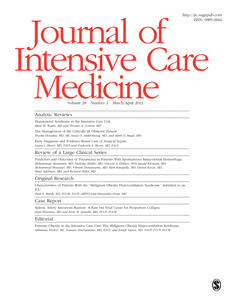
JOURNAL OF INTENSIVE CARE MEDICINE
Scope & Guideline
Advancing Critical Care Excellence
Introduction
Aims and Scopes
- Critical Care Management:
The journal covers a wide array of topics related to the management of critically ill patients, including advanced techniques in mechanical ventilation, sedation practices, and hemodynamic monitoring. - Clinical Outcomes and Prognosis:
Research on prognostic factors, outcomes of various interventions, and long-term effects of critical illness on patients is a core focus, providing insights into improving patient care and recovery. - Innovative Therapies and Technologies:
The journal emphasizes the exploration of novel therapies (e.g., ECMO, immunotherapy) and technological advancements (e.g., AI, telemedicine) that can enhance critical care delivery. - Sepsis and Infection Control:
A significant portion of the research is dedicated to understanding sepsis, its management, and the impact of infections in intensive care settings. - Multidisciplinary Approaches:
The journal promotes a multidisciplinary perspective in intensive care, encouraging collaboration between various healthcare professionals to optimize patient care. - Quality Improvement and Patient Safety:
Articles focusing on quality improvement initiatives, patient safety measures, and the implementation of evidence-based practices are frequently published.
Trending and Emerging
- COVID-19 Related Research:
With the ongoing impact of the COVID-19 pandemic, there is a notable increase in research focused on critical care management of COVID-19 patients, including studies on long-term outcomes, complications, and innovative treatment protocols. - Artificial Intelligence and Machine Learning:
The integration of AI and machine learning in predicting outcomes and enhancing decision-making processes in critical care is gaining traction, highlighting the journal's focus on technological advancements. - Mental Health and Psychosocial Aspects:
An emerging focus on the psychological impact of critical illness on patients and healthcare providers, including studies on post-intensive care syndrome and mental health interventions. - Telemedicine and Remote Monitoring:
Research exploring the efficacy and implementation of telemedicine in critical care settings is on the rise, driven by the need for innovative solutions during and post-pandemic. - Patient-Centered Care and Family Involvement:
A growing emphasis on involving families in care decisions and understanding patient experiences post-ICU is becoming a significant area of research, reflecting a shift towards holistic care.
Declining or Waning
- Traditional Mechanical Ventilation Strategies:
As newer methods and technologies emerge, traditional practices in mechanical ventilation are receiving less attention, with more emphasis on innovative approaches such as high-flow nasal cannula and non-invasive ventilation. - Generalized Pharmacological Interventions:
The landscape of critical care pharmacology is shifting towards personalized medicine and targeted therapies, leading to a reduction in studies on broad pharmacological interventions. - Basic Intensive Care Protocols:
Research focusing on basic ICU protocols and routines is becoming less prominent as the field moves towards more specialized and complex care strategies.
Similar Journals
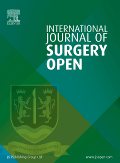
International Journal of Surgery Open
Connecting researchers and practitioners for better patient outcomes.International Journal of Surgery Open, published by ELSEVIER SCI LTD, is a leading academic journal based in the United Kingdom, dedicated to advancing the field of surgery through the dissemination of high-quality research and clinical findings. With an ISSN of 2405-8572 and an established impact factor, this journal provides a vital platform for researchers, healthcare professionals, and surgical students to share their innovative work and insights. The journal has been indexed in Scopus with a current rank of #256 out of 551 in the Surgery category, placing it in the 53rd percentile, and is categorized in the Q3 quartile for 2023. Operating under an open-access model, the International Journal of Surgery Open spans a comprehensive range of surgical disciplines, inviting submissions that contribute to the ongoing dialogue and discovery within surgery from 2015 to 2024. As such, it represents a crucial resource for those committed to enhancing surgical practice and improving patient outcomes in an ever-evolving medical landscape.
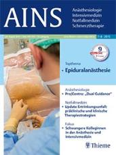
ANASTHESIOLOGIE INTENSIVMEDIZIN NOTFALLMEDIZIN SCHMERZTHERAPIE
Empowering Clinicians with Cutting-Edge ResearchANASTHESIOLOGIE INTENSIVMEDIZIN NOTFALLMEDIZIN SCHMERZTHERAPIE, published by GEORG THIEME VERLAG KG in Germany, serves as an essential resource for professionals in the fields of anesthesiology, intensive care, emergency medicine, and pain management. This esteemed journal, with the ISSN 0939-2661 and E-ISSN 1439-1074, has been a critical platform for scholarly exchange since 1980, advancing knowledge and practice in these vital areas of medicine. Although currently positioned in the Q4 category across several medical disciplines, its commitment to disseminating innovative research and case studies ensures that it remains relevant in the ever-evolving landscape of medical science. Although the journal does not offer open access, it provides comprehensive insights and findings that cater directly to the interests of researchers, clinicians, and students eager to enhance their expertise and stay abreast of contemporary practices. The journal continues to foster dialogue and development within its community, making a significant contribution to the understanding and improvement of patient care and clinical outcomes.

ANASTHESIOLOGIE & INTENSIVMEDIZIN
Elevating Standards in Anesthesiology and Critical CareANASTHESIOLOGIE & INTENSIVMEDIZIN is a peer-reviewed journal dedicated to the fields of anesthesiology, critical care, and intensive medicine. Published by AKTIV DRUCK & VERLAG GMBH in Germany, this journal has been an essential resource in the medical community since its inception in 1978. With a current impact factor placing it in the Q3 quartile in both anesthesiology and critical care categories, it serves as a platform for disseminating cutting-edge research and innovative practices. The journal invites contributions that enhance the understanding of pain management, perioperative care, and intensive treatment methodologies. Although not open access, it remains committed to advancing knowledge and improving patient outcomes. With a strong focus on practical applications, ANASTHESIOLOGIE & INTENSIVMEDIZIN is invaluable for researchers, clinical practitioners, and students seeking to deepen their expertise in these crucial areas of healthcare.

Netherlands Journal of Critical Care
Elevating Critical Care Standards GloballyThe Netherlands Journal of Critical Care, an esteemed publication of the NETHERLANDS SOC INTENSIVE CARE, serves as a vital resource for those in the fields of critical care and intensive medicine. As a platform focused on disseminating high-quality research from 2008 to 2023, this journal provides critical insights and advancements pertinent to the rapidly evolving landscape of intensive care practices. Though categorized in the fourth quartile for Critical Care and Intensive Care Medicine in 2023, its commitment to enhancing patient outcomes remains unwavering. With an ISSN of 1569-3511, this journal invites submissions that push the boundaries of knowledge and offer innovative approaches to critical care challenges. Thus, it is an essential reference for researchers, healthcare professionals, and students eager to stay at the forefront of critical care developments in the Netherlands and beyond.
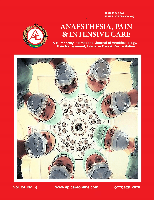
Anaesthesia Pain & Intensive Care
Innovating pain management and intensive care practices.Anaesthesia Pain & Intensive Care is an esteemed, open-access journal that has been at the forefront of disseminating pivotal research since 1999. Published by ANAESTHESIA PAIN & INTENSIVE CARE, this journal focuses on the critical fields of anesthesiology, pain management, and intensive care medicine, engaging a diverse audience of researchers, healthcare professionals, and students. Operating from Islamabad, Pakistan, it aims to foster knowledge exchange and innovative practices within its community. With a reputation indexed in Scopus and categorized in the fourth quartile for both anesthesiology and critical care, the journal provides a platform for emerging ideas and findings, inviting contributions that enhance the global discourse in these vital areas of medicine. For those seeking to stay at the forefront of clinical advancements, Anaesthesia Pain & Intensive Care is a valuable resource, promoting open access to ensure that critical information is available to all stakeholders.
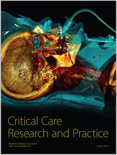
Critical Care Research and Practice
Fostering collaboration in the quest for critical care excellence.Critical Care Research and Practice is a distinguished open-access journal published by HINDAWI LTD that has been at the forefront of disseminating vital research in the fields of critical care and intensive care medicine since its inception in 2010. With an impressive Q2 ranking in its category and positioned in the top 63rd percentile according to Scopus rankings, the journal serves as a critical platform for researchers, practitioners, and students aiming to advance their understanding and improve outcomes in intensive care settings. Based in Egypt, the journal's breadth encompasses diverse aspects of critical care, including innovations in treatment protocols, evidence-based practices, and the latest advancements in patient care strategies. Through its commitment to open access, Critical Care Research and Practice ensures that high-quality research is readily available to a global audience, fostering collaboration and knowledge sharing across the medical community.
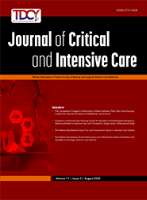
Journal of Critical & Intensive Care
Bridging gaps in critical care with impactful research.The Journal of Critical & Intensive Care, published by the esteemed Soc Turkish Intensivists - STI, serves as a vital platform for advancing knowledge and research in the evolving fields of critical care and intensive medicine. Since its inception in 2020, this journal has focused on disseminating high-quality research that addresses the complexities and challenges faced in the intensive care units, positioning itself as a critical resource for healthcare professionals, researchers, and students in Turkey and beyond. Although currently categorized in the Q4 quartile for Critical Care and Intensive Care Medicine, with a Scopus rank of 99 out of 110, the journal is rapidly gaining attention for its scholarly contributions. With an ongoing commitment to open access principles, it aims to enhance accessibility to groundbreaking studies and reviews, promoting collaborative progress in the critical care domain. The Journal of Critical & Intensive Care is not just a publication; it is a catalyst for innovation and knowledge-sharing critical to improving patient outcomes in intensive care settings.

Turkish Journal of Intensive Care-Turk Yogun Bakim Dergisi
Fostering Global Collaboration in Critical Care PracticesThe Turkish Journal of Intensive Care (Turk Yogun Bakim Dergisi), published by GALENOS PUBL HOUSE, is a premier, peer-reviewed open access journal dedicated to advancing the field of intensive care medicine. With its ISSN 2602-2974 and E-ISSN 2602-2974, this journal has been committed to providing high-quality research and clinical insights since its inception in 2002. The journal serves as a vital platform for professionals and researchers to disseminate innovative findings, explore emerging therapies, and discuss critical care practices, thereby contributing to enhanced patient outcomes in intensive care settings. Based in Istanbul, Turkey, it aims to foster an international dialogue among medical practitioners, researchers, and academicians dedicated to intensive care, ultimately contributing to the global body of knowledge in this crucial area of health care.
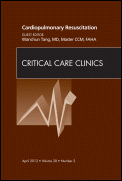
CRITICAL CARE CLINICS
Empowering Research to Enhance Patient OutcomesCRITICAL CARE CLINICS is a premier academic journal published by W B SAUNDERS CO-ELSEVIER INC, focusing on advancing knowledge in the fields of Critical Care and Intensive Care Medicine. With an impressive impact factor and designated as Q1 in both Critical Care and Intensive Medicine categories, this journal is a leading resource for healthcare professionals, researchers, and students alike. Since its establishment in 1985, it has evolved into an essential conduit for cutting-edge research, clinical insights, and evidence-based practices, bridging the gap between theoretical understanding and practical application in critical care. The journal maintains a high ranking, being positioned 15th of 110 in its category according to Scopus, with a noteworthy percentile of 86, indicating its influence and relevance in contemporary medical discourse. Although the journal is not open access, it provides valuable content for those dedicated to enhancing patient care and advancing the science of critical medicine. Its commitment to excellence makes it a vital resource for anyone engaged in the dynamic field of critical care.
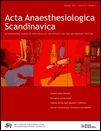
ACTA ANAESTHESIOLOGICA SCANDINAVICA
Elevating Pain Management through Cutting-Edge ResearchACTA ANAESTHESIOLOGICA SCANDINAVICA, published by Wiley, is a leading journal in the field of anesthesiology and pain medicine, boasting an impressive impact factor evident by its Q1 classification in 2023. As a highly respected publication with a history dating back to 1957 and continuing through to 2024, it serves as a vital platform for researchers and practitioners in Denmark and worldwide to disseminate significant findings and innovative practices in anesthetic techniques and pain management. The journal holds a commendable rank of #45 out of 136 in the Scopus category for Anesthesiology and Pain Medicine, positioning it within the 67th percentile, underlining its substantial contribution to the scientific community. Although not an Open Access journal, ACTA ANAESTHESIOLOGICA SCANDINAVICA remains pivotal for academics and healthcare professionals keen on advancing the field through peer-reviewed research and insightful reviews. Researchers and scholars are encouraged to submit their original studies and reviews to continue enriching this prestigious journal’s commitment to excellence in anesthesiology.